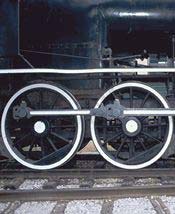
Spot-welds stick sliding metals
Two smooth, cold, metal surfaces are like pieces of tacky Sellotape. They form tiny spot welds that have to be broken apart before they can slide over each other. This, claim two physicists in California 1 , is another reason why metals stick as they slip if they are pressed together and pushed.
Such microscopic causes of friction and wear are increasingly important as the scale of mechanical engineering shrinks to below what

Successful Test Observations With Powerful New Instrument at Paranal
One of the most fundamental tasks of modern astrophysics is the study of the evolution of the Universe. This is a daunting undertaking that requires extensive observations of large samples of objects in order to produce reasonably detailed maps of the distribution of galaxies in the Universe and to perform statistical analysis.
Much effort is now being put into mapping the relatively nearby space and the

Bouncing laser beams could bring quantum strangeness to the everyday world.
The quantum world of atoms and subatomic particles is full of intuition-defying phenomena such as objects existing in two different states at once. We don’t normally have to worry about such weirdness impinging on our everyday macroscopic world. But Italian physicists have worked out how to invest something we can see and touch with quantum strangeness.
Stefano Mancini, of the University of Mila

Surplus of Intergalactic Material May Be Young Supercluster Observations with ESO`s Very Large Telescope (VLT) have enabled an international group of astronomers to study in unprecedented detail the surroundings of a very remote galaxy, almost 12 billion light-years distant. The corresponding light travel time means that it is seen at a moment only about 3 billion years after the Big Bang. This galaxy is designated MS 1512-cB58 and is the brightest known at such a large distance and
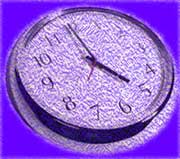
Jumps in space-time might explain the curious survival of energetic particles.
Space and time must be grainy, not smooth. Otherwise high-energy particles produced in astrophysical processes would not be detectable on Earth.
So says Richard Lieu of the University of Alabama in Huntsville. Many agree that jumps in space-time occur on scales that are far too small to measure, but the idea has not yet been proved. Lieu now shows that using this hypothesis can explain how highly

Sci-fi experts know that many seemingly impossible technologies materialise years later, but unfortunately this may not to be the case for warp-drive – travelling through space faster than the speed of light. The favourite science fiction theory of space contracting in front of spacecraft, and expanding behind it to form warp-drive is under threat according to new work by a researcher in Portugal published today in the Institute of Physics journal, Classical and Quantum Gravity.
General re

Physicists design material that conducts one way and insulates the other.
European physicists have sketched out a blueprint for a valve that lets heat pass only one way. The proposed material conducts heat flowing in one direction, but also behaves as an insulator, stopping it going the other way 1 .
In theory, a heat valve could keep parts of microelectronic circuitry cool or channel heat to chip-sized chemical reactors, which are currently being developed fo
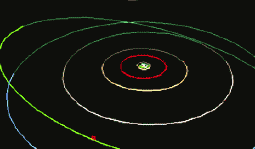
A new analysis of the mineral composition of meteorites suggests that theories concerning the development of the early solar system may need revision. Announcing their results today in the journal Science, researchers conclude that it took the earth only 20 million years to form from material floating around the early sun. Previous estimates, in contrast, had placed that figure at around 50 million years. The findings also re-open the debate over which types of supernovae could have produced our sola
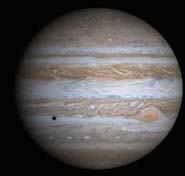
A space probe carrying British-designed and operated instruments has helped scientists to understand the magnetosphere surrounding Jupiter better than ever before.
Its magnetosphere was observed to contract in response to shock waves generated at the Sun, the first time scientists have been able to clearly observe how changes in the solar wind affect the magnetosphere of this giant planet.
In addition an unexplained pulsating X-ray hot spot near Jupiter’s North pole has been obser

Researchers have developed a sophisticated way of measuring the print quality of paper. The work, published today in the Institute of Physics journal, Measurement Science and Technology, describes how Jari Palviainen and colleagues at the Universities of Joensuu and Oulu in Finland, use what is known as a diffractive optical element-based sensor to investigate how laser-light interacts with paper before and after laser printing with colour ink.
The physical properties of paper such as colou
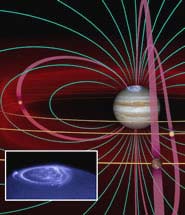
Two space probes lift the lid on Jupiter’s magnetosphere.
Even Stanley Kubrick couldn’t have directed it better. In the first days of 2001, two spacecraft, Cassini and Galileo, met at Jupiter 400 million kilometres from Earth, to study the mysterious forces emanating from the giant planet.
The first analysis of the data they sent back has now been unveiled 1-7 . It paints a dramatic picture of the planet’s invisible magnetosphere – looping magnetic fields, crackling radi

New theory shows that high performance needn’t mean high risk.
For man-made systems such as machines and markets, catastrophe lurks somewhere between high risk and high performance. US physicists may have found a way to strike the optimal balance 1 .
This trade-off is familiar to the financial world. Brokers develop investment portfolios to provide the best returns within a specified level of risk. Mark Newman and co-workers at the Santa Fe Institute in New M
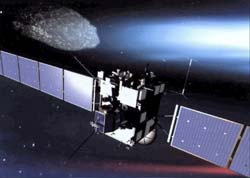
Chase a fast-moving comet, land on it and ’ride’ it while it speeds up towards the Sun: not the script of a science-fiction movie, but the very real task of ESA’s Rosetta spacecraft.
New observations with the European Southern Observatory’s (ESO) Very Large Telescope (VLT) provide vital information about Comet Wirtanen – Rosetta’s target – to help ESA reduce uncertainties in the mission, one of the most difficult ever to be performed.
Every 5.5 years Comet Wirtanen completes an o

The Sagittarius dwarf galaxy is our nearest neighbor. Yet it has been discovered only recently, in 1994, being hidden by the stars and dust in our own Galaxy, the Milky Way. It is however possible today to better know this companion galaxy, thanks to variable stars, the RR Lyrae, in which Sgr-dw is particularly rich. In a recent paper, Patrick Cseresnjes, from Paris Observatory, shows for the first time that Sgr-dw is not typical of other satellites of the Milky Way, but reveals instead striking simi
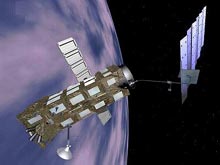
During the night of 28 February/1 March, Envisat, ESA’s most powerful and sophisticated Earth observation satellite, will be launched by an Ariane 5 rocket from Europe’s spaceport in Kourou at 22:07 hrs Kourou time (02:07 hrs CET).
Built by a consortium of 50 companies led by Astrium, Envisat is the successor to ESA’s ERS satellites. With an array of ten instruments to monitor land, oceans, atmosphere and ice caps, it will provide the most complete set of observations ever achieved, to hel

“Nuclear fusion” is the melting of light nuclei into heavier ones, a process that according to the laws of physics releases enormous amounts of energy. For the past 50 years many scientists have sought ways of harnessing this fusion reaction under controlled reactor conditions as a safe, clean and practically inexhaustible source of energy. Siegbert Kuhn and his team at the Institute of Theoretical Physics at Innsbruck University are making a major contribution to these efforts and positioning Austri